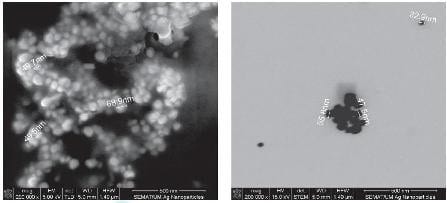 Researchers have studied the effect of size on silver nanoparticle deposition onto polyamide fabrics after surface chemical modification and activation by air DBD plasma pre-treatment.
Researchers have studied the effect of size on silver nanoparticle deposition onto polyamide fabrics after surface chemical modification and activation by air DBD plasma pre-treatment.
They obtained higher hydrophilicity and improved adhesive properties of hydrophobic fibres by non-thermal atmospheric plasma functionalization and etching.
Previous research has shown that smaller silver nanoparticles release more Ag+ ions and have a higher antibacterial effect. However, there are no reports on the size-dependent physical and chemical surface effects of the deposited nanoparticle on DBD plasma functionalized polyamide e.g. electrostatic chemical interactions, wettability and plasma aging.
The group therefore investigated the effect on the deposition of three different size (10, 20 and 50 nm) silver nanoparticles. Their analyses confirm that the smaller the diameter of nanoparticles is, the higher is their adsorbed amount on the polyamide. The DBD treatment on polyamide induces a three-fold increase in Ag adsorption. The results also confirm a dual effect on the wettability of the plasma treated polyamide substrate. Nanoparticles slightly enhance the hydrophobicity of the polyamide surface and, at the same time, the drastic chemical changes of the plasma treatment provide high hydrophilicity. The size-dependent electrostatic interactions with nanoparticles favouring the stabilization of the new functional groups on to the polyamide surface and protect them against the plasma aging effect.

















